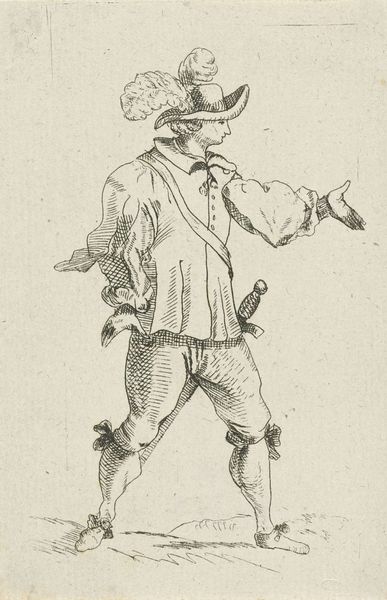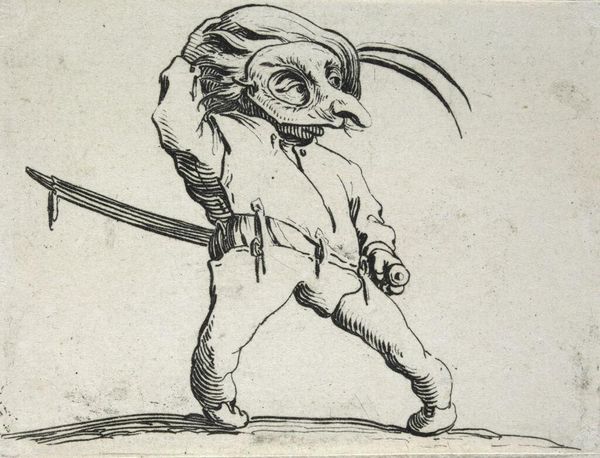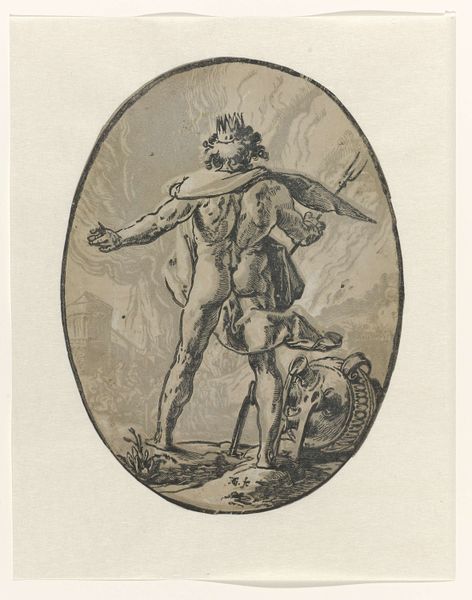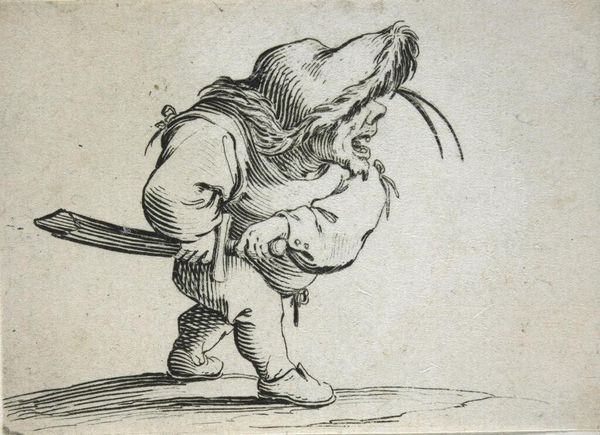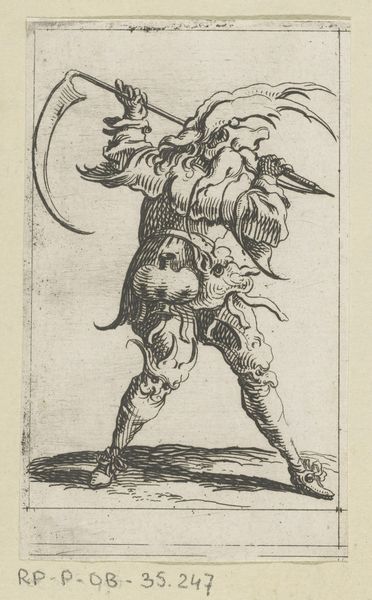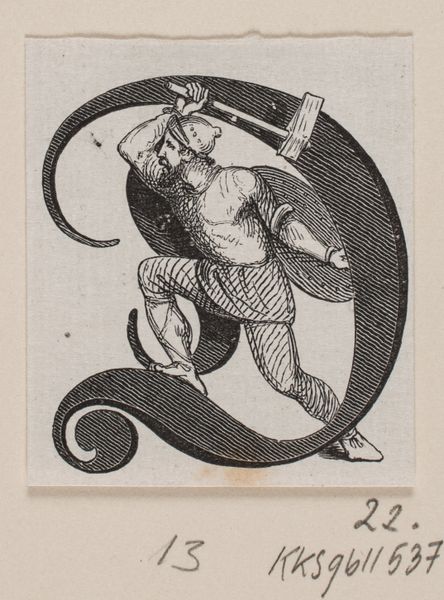
drawing, ink, pen
#
portrait
#
drawing
#
imaginative character sketch
#
quirky sketch
#
cartoon sketch
#
figuration
#
personal sketchbook
#
ink
#
idea generation sketch
#
pen-ink sketch
#
sketchbook drawing
#
pen
#
history-painting
#
storyboard and sketchbook work
#
sketchbook art
#
initial sketch
Dimensions: height 118 mm, width 70 mm
Copyright: Rijks Museum: Open Domain
Curator: Immediately striking! There’s an economy of line here that just vibrates with life. Editor: Indeed. What we're looking at is a pen and ink drawing entitled “Man met zwaard op de rug gezien” which translates to "Man with sword seen from the back," made by Cornelis Adrianus van Hoogstraten, sometime between 1757 and 1824. Curator: The way he suggests volume with such minimal shading, and the quick, almost scribbled ground beneath the figure—it feels incredibly immediate. I am curious about the kind of paper, if its texture influenced the linework in some way. Editor: Well, the work exists within the realm of Dutch history-painting and figuration but moves, by way of the artist's technique and the scale of the drawing, towards a kind of "personal sketchbook" or a "storyboard sketch," we could argue. What function may this sketch have served within Van Hoogstraten's practice, and what possibilities were afforded to the artist because it’s a pen and ink work rather than a large-scale painting? Curator: Absolutely. Considering it as a preliminary sketch allows us to investigate the function and status of drawings, in general, at the time. Often viewed as subservient to painting or sculpture, drawings had to be deemed 'finished' for its inherent worth and value to be recognised in the art market. We might think about what paper would have been available to Van Hoogstraten and the cost of materials such as ink. I imagine that artists of this time would not take materials for granted. Editor: And who was the intended audience? It does feel quite intimate, doesn’t it? Was this a character study for a larger composition, a quick note jotted down for future use, or perhaps an artwork produced purely for personal interest, rather than wider public appreciation? This of course determines the mode of engagement the artwork establishes. Curator: Perhaps by isolating and extracting a detail of the body – the view from the back – Van Hoogstraten invited his contemporary viewers into a specific mode of looking and interacting with representations of power. He might not only make a painting with a sword-carrying protagonist, but also ask his audience to examine from which point, and through whose gaze, we approach such figures and power structures. Editor: Very insightful. It prompts us to think about how the conditions of artistic production shape not just the image, but the broader dialogue around art's role within the culture in which it emerged. Curator: It also feels refreshing to get so close to the artist's hand. A painting, no matter how expressive, often obscures the touch. Here, the directness of the materials reveals the decision-making process in a way I find compelling.
Comments
No comments
Be the first to comment and join the conversation on the ultimate creative platform.
